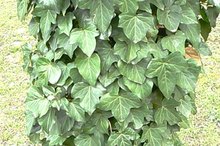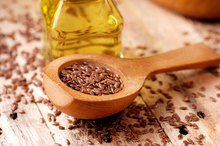Stages of Poison Ivy Rash
Poison ivy rashes are a result of contact with a poison ivy or poison oak plant. The oil from the plant seeps into the skin and causes the allergic reaction, and it does not matter what time of year it is. Poison ivy plants secrete this oil even in the fall when there are no leaves on the plant. If you know that you came in contact with poison ivy or oak, wash the contaminated area with cool water and soap within the first few minutes to keep from getting the rash. If you allow the oil to sit on your skin for more than 10 minutes, more than likely a rash will develop. The rash itself takes between 12 hours and two days to develop, and can last up to a month or more if not treated.
Within a day or so the rash, in the form of small blisters, will show up in the location that was contaminated. It takes several days for the rash to show up in all contaminated areas, and this is why some believe that the rash is spreadable. This is not the case, however, and you cannot transfer the rash to other locations on your body, or other people, once it has broken out.
Once the blisters show up on your body, they will begin to itch. The intensity of the itching depends on your level of sensitivity to the plant. Some have only a mild itch, while others find it unbearable.
The blisters eventually break and ooze to release the fluid inside. This fluid is not the oil from the plant and cannot spread the rash to other locations. It is just a fluid buildup that breaks the skin and allows the blisters to dry up eventually. Once the blisters break, the healing process quickens and the rash starts to dry up.
You can speed up healing with treatments such as Ivy Dry, which encourage the blisters to dry out faster. Other products focus on eliminating the rash's side effect of itching through the use of anti-itching ingredients. These products do not heal the rash, but are aimed at making you more comfortable while your body heals itself.
Related Articles
References
- Boston Children's Hospital. Poison Ivy, Poison Oak and Poison Sumac.
- American Academy of Dermatology. Poison Ivy, Oak, and Sumac: Who gets a rash and is it contagious?
- Prok L, McGovern T. Patient education: Poison ivy (Beyond the Basics). UpToDate. Updated March 25, 2019.
- U.S. Food and Drug Administration. Outsmarting Poison Ivy and Other Poisonous Plants. Updated August 6, 2016.
- Porter R. Poison Ivy, Poison Oak and Poison Sumac. National Capital Poison Center.
- Usatine RP, Riojas M. Diagnosis and management of contact dermatitis. Am Fam Physician. 2010;82(3):249-55.
- MedlinePlus. Bentoquatam Topical. Updated February 15, 2018.
- American Academy of Dermatology. (2018). Poison ivy, oak, and sumac. https://www.aad.org/public/diseases/itchy-skin/poison-ivy-oak-and-sumac
- Curtis G, Lewis AC. Treatment of severe poison ivy: a randomized, controlled trial of long versus short course oral prednisone. J Clin Med Res. 2014 Dec;6(6):429-34. doi: 10.14740/jocmr1855w.
- Habif TP. Clinical Dermatology: A Color Guide to Diagnosis and Therapy. Elsevier; 2016.
- U.S. Food and Drug Administration. (2016). Outsmarting Poison Ivy and Its Cousins. https://www.fda.gov/ForConsumers/ConsumerUpdates/ucm049342.htm
Writer Bio
Keith Dooley has a degree in outdoor education and sports management. He has worked as an assistant athletic director, head coach and assistant coach in various sports including football, softball and golf. Dooley has worked for various websites in the past, contributing instructional articles on a wide variety of topics.








